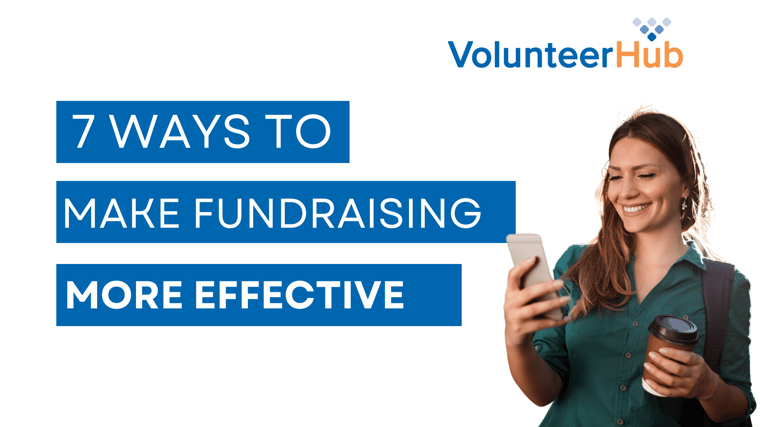

Related Posts
Subscribe to Our Blog
Subscribe to receive email notifications every time we publish new insights, news, and thought leadership to our blog.

For most nonprofits, fundraising is a year-round event. How do you reach new donors? How do you engage existing ones? If you want to increase the impact of your organization's fundraising campaigns, it is key to ask the right question, at the right time, in the right way. Below, we have compiled some fundraising statistics that you should know, and 7 tips to help you make your fundraising initiatives more effective.
Now that we have covered a few fundraising statistics, here are 7 tips to consider when creating a new fundraising campaign or optimizing your existing ones.
When you’re making your case to potential donors, it’s important to be clear about what you’re asking for and how their donation will be used. Be specific in your ask and avoid using jargon or acronyms that could confuse your target audience. You want donors to understand exactly where their contribution will be going and feel confident that it will be used in a way that aligns with their values. This is your opportunity to communicate your organization's mission effectively.
While logic and reason are important, people are ultimately driven by emotion when they decide whether to support a cause. When crafting your fundraising message, tug at heartstrings and paint a picture of how donations will make a real difference in the lives of those you serve. Don’t be afraid to be vulnerable and share stories that highlight the human impact of your nonprofit's work. Keep in mind that 72% of all charitable giving comes from individuals, make your mission resonate with them through storytelling.
In addition to an emotional appeal, it’s also important to provide potential donors with hard evidence that backs up your claims. Share statistics and data points that illustrate the need for your work and show how effective you’ve been in meeting your goals. This will help instill confidence that donations, no matter how big or how small, will be put to good use.
Not everyone is able or willing to write a big check, but that doesn’t mean they aren’t interested in supporting your nonprofit’s work. By offering multiple giving options—such as monthly donations, planned gifts, or stock donations—you can make it easy for potential donors to support your organization in a way that works best for them financially. And don’t forget about other ways to give, such as volunteerism or in-kind donations!
Having an active presence online is important. In fact, according to Blackbaud, online giving has grown by 42% over the last 3 years. Your organization should leverage social media and your organization's website to grow a network of new donors, engage existing donors, and solicit support. Developing a strategy for online fundraising initiatives will drastically enhance your reach.
When looking for new ways to raise money, don’t forget or neglect those who have donated before. On average, repeat donors make up for 40-45% of donations. Prioritize finding a healthy balance between donor acquisition and retention.
There is a great resource on NpEngage that provides 6 tactics for increasing donor retention.
Did you know that there is a strong connection between volunteers and donors? The Corporation for National & Community Service (CNCS) found that people who volunteer are twice as likely to donate. Recruiting volunteers is a great way to get potential donors through the door and give them first-hand experience with your mission.
Fundraising is essential but can also be challenging, especially if your organization is competing with other nonprofits for donor dollars. By following these tips, you can make your nonprofit’s fundraising more effective. Keep your message clear, make an emotional appeal, use data to back up your claims, offer multiple giving options, and convert volunteers. With a focused and polished plan, you can reach your fundraising goals and make an even bigger impact in your community.
Subscribe to receive email notifications every time we publish new insights, news, and thought leadership to our blog.